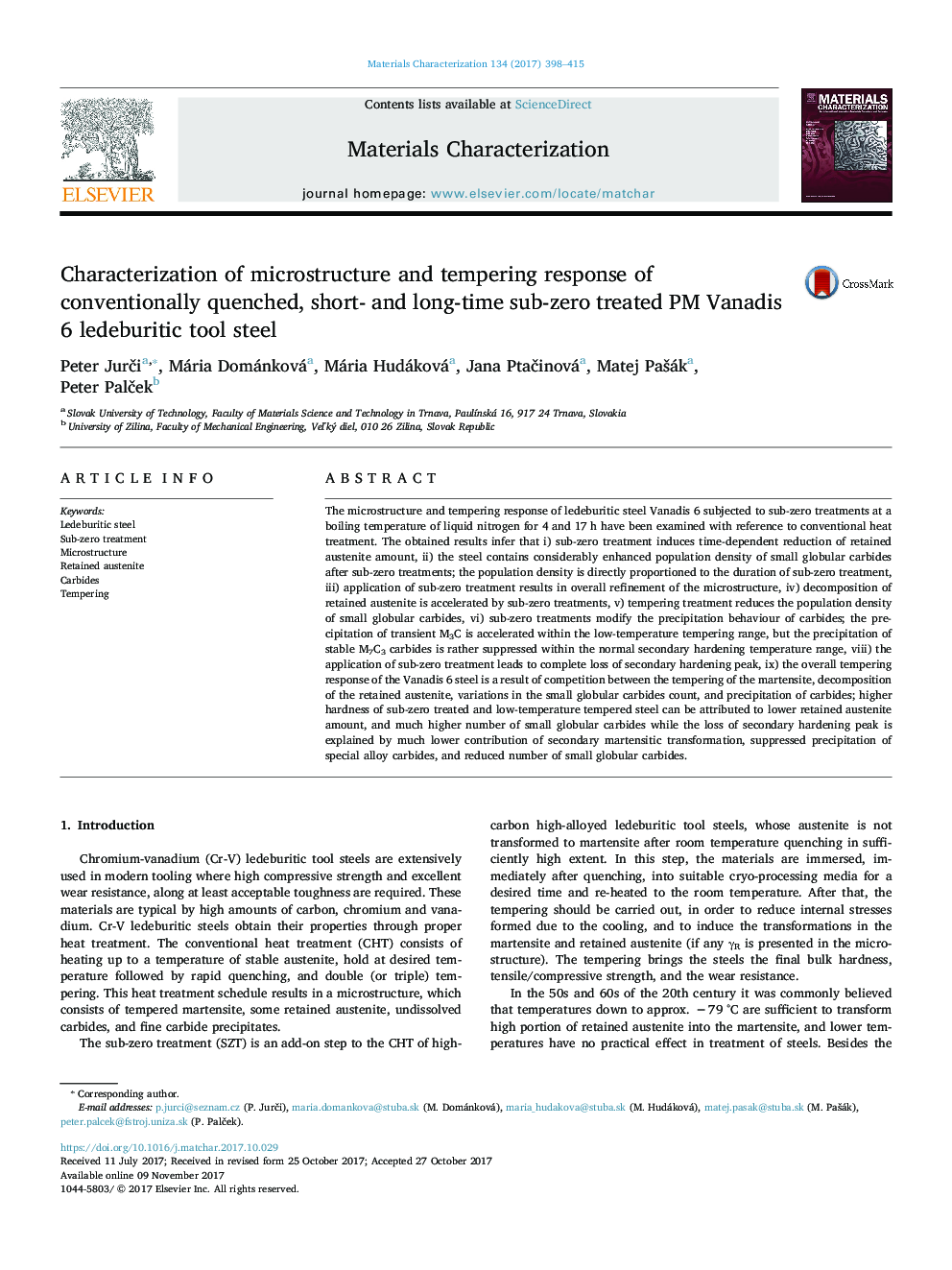| Article ID | Journal | Published Year | Pages | File Type |
|---|---|---|---|---|
| 7969599 | Materials Characterization | 2017 | 18 Pages |
Abstract
The microstructure and tempering response of ledeburitic steel Vanadis 6 subjected to sub-zero treatments at a boiling temperature of liquid nitrogen for 4 and 17Â h have been examined with reference to conventional heat treatment. The obtained results infer that i) sub-zero treatment induces time-dependent reduction of retained austenite amount, ii) the steel contains considerably enhanced population density of small globular carbides after sub-zero treatments; the population density is directly proportioned to the duration of sub-zero treatment, iii) application of sub-zero treatment results in overall refinement of the microstructure, iv) decomposition of retained austenite is accelerated by sub-zero treatments, v) tempering treatment reduces the population density of small globular carbides, vi) sub-zero treatments modify the precipitation behaviour of carbides; the precipitation of transient M3C is accelerated within the low-temperature tempering range, but the precipitation of stable M7C3 carbides is rather suppressed within the normal secondary hardening temperature range, viii) the application of sub-zero treatment leads to complete loss of secondary hardening peak, ix) the overall tempering response of the Vanadis 6 steel is a result of competition between the tempering of the martensite, decomposition of the retained austenite, variations in the small globular carbides count, and precipitation of carbides; higher hardness of sub-zero treated and low-temperature tempered steel can be attributed to lower retained austenite amount, and much higher number of small globular carbides while the loss of secondary hardening peak is explained by much lower contribution of secondary martensitic transformation, suppressed precipitation of special alloy carbides, and reduced number of small globular carbides.
Related Topics
Physical Sciences and Engineering
Materials Science
Materials Science (General)
Authors
Peter JurÄi, Mária Dománková, Mária Hudáková, Jana PtaÄinová, Matej PaÅ¡ák, Peter PalÄek,
